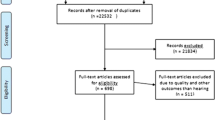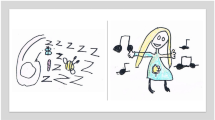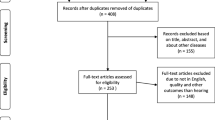Abstract
Purpose
The study evaluated if there were differences between three types of hearing aids, Lyric extended wear (EW), receiver-in-the-ear canal (RITE), completely-in-the-canal (CIC) hearing aids in terms of audiological and psychosocial outcomes.
Methods
Fifteen patients were selected. Inclusion criteria: Pure-Tone Average (PTA) air conduction range of hearing threshold at 500, 1000, and 2000 Hz from 15 dB HL to 75 dB HL. Patients were assigned in three groups according to the hearing aid used: Extended wear, RITE, and CIC. Pure-tone audiometry, speech audiometry, free-field pure-tone and speech audiometry with hearing aids, and Matrix sentence test were performed. The Satisfaction with Amplification in Daily Life (SADL) questionnaire and the Abbreviated Profile of Hearing Aid Benefit (APHAB) questionnaire were used to assess the psychosocial and audiological benefits provided by hearing aids.
Results
No differences were demonstrated in the Matrix sentence test between the groups. A statistically significant difference was present between the “Personal image” of patients with EW and RITE with a p value of 0.01 (better outcome using EW). For the APHAB questionnaire, a significant difference was present in the “Aversiveness” of the patients with EW in comparison to CIC and RITE with a p value of 0.01 (higher aversiveness of sound using EW).
Conclusion
In terms of audiological advantage, extended ear hearing aids are similar to RITE and CIC as demonstrated from the Matrix speech reception threshold. The result was confirmed using the APHAB questionnaire. Extended wear devices are better than daily hearing aids concerning the “personal image”.



Similar content being viewed by others
References
World Health Organization (2021) World report on hearing. World Health Organization, Geneva
Freni F, Gazia F, Slavutsky V, Scherdel EP, Nicenboim L, Posada R et al (2020) Cochlear implant surgery: endomeatal approach versus posterior tympanotomy. Int J Environ Res Public Health 17(12):4187
Tisch M (2017) Implantable hearing devices. GMS Curr Top Otorhinolaryngol Head Neck Surg 16:Doc06
Zernotti ME, Di Gregorio MF, Galeazzi P, Tabernero P (2016) Comparative outcomes of active and passive hearing devices by transcutaneous bone conduction. Acta Otolaryngol 136(6):556–558
Dillon H (2012) Hearing aids, 2nd edn. Boomerang Press; Thieme, Sydney
National Institute on Deafness and Other Communication Disorders. Quick Statistics About Hearing. NHI Website. https://www.nidcd.nih.gov/health/statistics/quick-statistics-hearing. Accessed 26 Nov 2021
Wallhagen MI (2010) The stigma of hearing loss. Gerontologist 50(1):66–75
Kochkin S, Marke Trak VII (2007) Obstacles to adult non-user adoption of hearing aids. Hear J 60(4):24–51
Kochkin S, MarkeTrak V (2000) “Why my hearing aids are in the drawer”: the consumers’ perspective. Hear J 53(2):34
Sperling NM, Yerdon SE, D’Aprile M (2019) Extended-wear hearing technology: the nonimplantables. Otolaryngol Clin North Am 52(2):221–230
Biggins A Singh G Solodar H (2017) LyricTM shows significant psychosocial benefits. Phonak documentation on website. https://www.phonakpro.com/content/dam/phonakpro/gc_us/en/products_solutions/hearing_aid/lyric/documents/Lyric-FSN-August-2017.pdf. Accessed 26 Nov 2021
Turrini M, Cutugno F, Maturi P, Prosser S, Leoni FA, Arslan E (1993) Nuove parole bisillabiche per audiometriavocale in lingua Italiana [Bisyllabic words for speech audiometry: a new Italian material]. Acta Otorhinolaryngol Ital 13(1):63–77
Puglisi GE, Warzybok A, Hochmuth S, Visentin C, Astolfi A, Prodi N, Kollmeier B (2015) An Italian matrix sentence test for the evaluation of speech intelligibility in noise. Int J Audiol 54(Suppl 2):44–50
Cox RM, Alexander GC (1999) Measuring satisfaction with amplification in daily life: the SADL scale. Ear Hear 20(4):306–320
Cox RM, Alexander GC (1995) The abbreviated profile of hearing aid benefit. Ear Hear 16(2):176–186
Phonak. Lyric fitting guidelines for hearing care professionals. Phonak documentation on website. https://www.phonakpro.com/content/dam/phonakpro/gc_us/en/products_solutions/hearing_aid/lyric/documents/028-6485-03_Keys_to_Success_for_Lyric_Fitters.pdf. Accessed 26 Nov 2021
Gazia F, Galletti B, Portelli D, Alberti G, Freni F, Bruno R et al (2020) Real ear measurement (REM) and auditory performances with open, tulip and double closed dome in patients using hearing aids. Eur Arch Otorhinolaryngol 277(5):1289–1295
Bruno R, Freni F, Portelli D, Alberti G, Gazia F, Meduri A et al (2021) Frequency-lowering processing to improve speech-in-noise intelligibility in patients with age-related hearing loss. Eur Arch Otorhinolaryngol 278(10):3697–3706
Wolfe J, Schafer E, Martella N, Morais M, Mann M (2015) Evaluation of extended-wear hearing technology for children with hearing loss. J Am Acad Audiol 26(7):615–631
Funding
This research received no external funding.
Author information
Authors and Affiliations
Corresponding author
Ethics declarations
Conflict of interest
The authors declare no conflict of interest.
Additional information
Publisher's Note
Springer Nature remains neutral with regard to jurisdictional claims in published maps and institutional affiliations.
Rights and permissions
About this article
Cite this article
Gazia, F., Portelli, D., Lo Vano, M. et al. Extended wear hearing aids: a comparative, pilot study. Eur Arch Otorhinolaryngol 279, 5415–5422 (2022). https://doi.org/10.1007/s00405-022-07445-0
Received:
Accepted:
Published:
Issue Date:
DOI: https://doi.org/10.1007/s00405-022-07445-0




